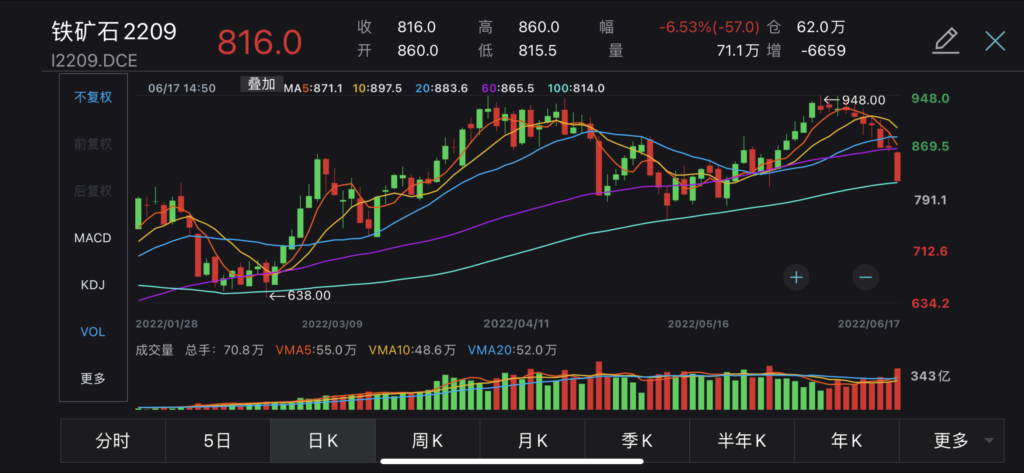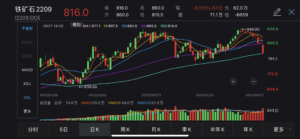>>REAL-TIME UPDATES IN THE WIRE. CLICK HERE<<<
China’s most-traded iron ore futures contract on the Dalian Commodity Exchange, for September delivery, tumbled as much as 6.5% to hit 815.5 yuan per tonne, the lowest level since May 26.
China Everbright Securities said in a note on Friday that the plunge in iron ore futures was partly attributable to news that some steelmakers in Tangshan, a major steel production hub in China, will reduce production.Meanwhile, authorities in East China’s Jiangsu province, another steel production hub, are also pressing for crude steel production cut, it said.
Rainy weather since May in China’s southern regions has weakened steel demand. According to data from consultancy Mysteel, apparent demand for steel products continued to decline this week.
Output of steel products this week has declined by 213,100 tonnes to 9.82 million tonnes and the total inventories of the five major steel products increased by about 316,700 tonnes to 22.16 million tonnes, according to Mysteel, adding that iron ore demand is expected to weaken marginally.
Separately, data from the China Iron and Steel Association showed that social inventory of the five major steel products in 21 major cities stood at 12.38 million tonnes in the first ten days of June, rising by 2.6% from the previous ten days, marking the first rise after sliding for nine ten-day session.
Fresh covid-19 outbreaks in China revived fears of lockdowns, dampening demand in the world’s top steel producer. Beijing has raced to contain a “ferocious” outbreak since earlier this week, with millions facing mandatory testing and thousands under targeted lockdowns, after the capital city recently relaxed curbs.
A mass testing was also announced in Shanghai, following the lift of a two-month lockdown on June 1, while an outbreak was detected in Inner Mongolia, a major producer of metallurgical coal that is also used in steel production.


